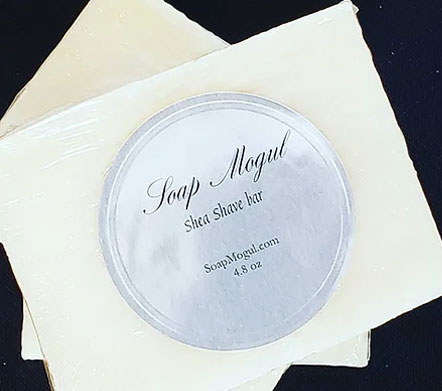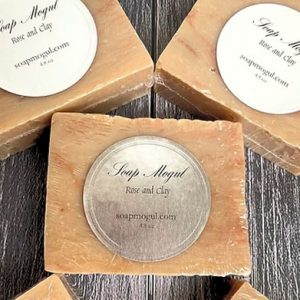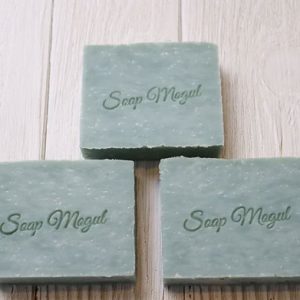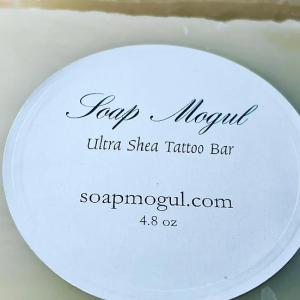Description
Product Ingredients
Saponified Oils (Olive Oil, Organic Sustainable Palm Oil, Coconut Oil, Shea Butter), Water, Sodium Hydroxide.
RETURN & REFUND POLICY
Returns & exchange
100 percent money-back guarantee.
If you’re not happy with our soap, we’re not happy.
Shipping
Orders ship within 2 to 3 days of receipt. All orders ship by 4 p.m. from Waconia, MN. Orders usually arrive within 3 to 10 days of shipping.
History of Shea
Origin and Processing Of Shea Butter
The origin of Shea Butter takes us all the way to beautiful Africa. More specifically it comes from the so-called “African Shea Belt” particularly in the Northern Region of Ghana in west Africa. Shea butter production is the main livelihood for more than 900,000 rural women in Ghana, yet they tend to benefit least from the final value of the commodity. While women in the Upper West region of Ghana are by tradition excluded from land access, they have been allowed ownership of shea nuts. They can freely pick from the wild.This is a potential large source of income because more than 60% of the nuts are left uncollected.
Shea Nuts
Shea nut is the seed of the Shea fruit that grows on the Shea tree. The Shea generally grows wild and it’s an indigenous tree species to many countries in west Africa especially in Ghana. The Shea fruit fall to the ground during harvesting period (typically June through August).They are buried in pits which causes the pulp to ferment and disintegrate and produces enough heat to prevent germination. The Shea nuts are dried for a few days and are later shelled and winnowed, usually by hand. The kernels are dried further to reduce moisture content from about 40 percent to about 7 percent.
Demand and Quality Standards
Seemingly Buyers specify their own quality standards for purchases of Shea nuts and Shea butter.The following is a benchmark for the composition of the Shea nut required for export/import:Free Fatty Acids (FFA) = < – 6%Moisture Content = < – 7%Oil Content = ->45%Latex = 4-10%. Shea butter is fat that’s extracted from the nuts of the Shea tree. It’s solid at warm temperatures and has an off-white or ivory color. Shea trees are native to West Africa, and most Shea butter still comes from that region. For Centuries, shea butter is beeing used as a cosmetic ingredient.
The Shea Tree
The origin of shea butter cannot be told without a touch on the shea tree. The shea tree which was scientifically known in the past as ‘Butryospermum paradoxum’, became known as ‘Vitellaria paradoxa’. According to existing literature, the oldest specimen of the shea tree was first collected by Mungo Park on May 26, 1797.
Where They Grow
The many vernacular names for the Shea tree shows how widely it is spread across parts of Africa. It covers nearly 5,000km from Senegal to Uganda across the African Continent. The tree grows very well on a wide range of soils, including highly degraded, arid, semi-arid and rocky soil.It grows to an average height of about 15 meters and girths of about 175 meters with profuse branches and a thick waxy and deeply fissured bark that makes it fire resistant. The Shea tree grows naturally in the wild in the dry Savannah belt of West Africa from Senegal in the west to Sudan in the east, and onto the foothills of the Ethiopian highlands. It occurs in 19 countries across the African continent, namely Benin, Ghana, Chad, Burkina Faso, Cameroon, Central African Republic, Ethiopia, Guinea Bissau, Cote D’Ivoire, Mali, Niger, Nigeria, Senegal, Sierra Leone, Sudan, Togo Uganda, Zaire and Guinea. In Ghana (FAO, 1988a). The Shea tree occurs extensively in the Guinea Savannah and less abundantly in the Sudan Savannah and it grows mostly in the wild state. In Ghana, it grows in almost half of the country. It occurs over almost the entire area of Northern Ghana, covering land area of over 77,670 square kilometers in Western Dagomba, Southern Mamprusi, Western Gonja, Lawra, Tumu, Wa and Nanumba with Eastern Gonja having the densest stands. There is sparse Shea tree cover found in Brong-Ahafo, Ashanti, and the Eastern and Volta regions in the south of the country. According to legend among local people no one owns the Shea tree, because it germinates and grows on its own.
How Long Does A Shea Tree Take To Maturity?
The Shea tree, when it passes the germination stage in about three to five years becomes fire resistant. It is also not known to have natural enemies such as pests. Once it survives the first five years of its early stages of germination and growth, it grows slowly and takes about 30 years to reach maturity and from there, it can live for up to three hundred years. In the absence of any hazards, including tree felling, it can bear fruit for two hundred years. The Shea tree has no capacity for vegetative regeneration, and therefore, can only be propagated through its seed. And that is why the scientific breakthrough by the CRI should make the headlines. Several attempts to modify the Shea tree have until now not been successful.
Economic And Cultural Importance Of The Shea Tree
The economic importance of the Shea tree cannot be over emphasized, especially in the face of the unstable world market price for cocoa and the need to find suitable substitutes for cocoa in the confectionery and cocoa butter industry. Indeed, this importance became even more significant since the early 1970s. The Shea tree also has a great, untapped capacity for producing copious amounts of sap that can constitute an important source of raw material for the gum and rubber industry. The mature kernel contains about 61% fat which when extracted is edible and can serve medicinal as well as industrial purposes. An estimated 9.4 million Shea trees are in Ghana, and these can potentially yield one hundred tons of Shea nuts worth about 100 million US dollars per year. Shea butter has been found to have a fat composition similar to cocoa butter and is used as a substitute for lard or margarine because it makes a highly, pliable dough. Shea butter is also used in making soap and candles, and it is incorporated in margarine formulations. After the oil is extracted, the residue serves as excellent fuel, and can also be mixed with mud for plastering traditional mud huts.
Medicinal Properties of The Shea Tree
Available records show that as far back as 1728, shea butter was considered a highly prized medicinal substance in many parts of Africa. Shea butter is unique because of its high fraction, about 8%, which contains medicinal properties. It is known to be naturally rich in Vitamins A, E, and F, plus a number of other vitamins and minerals. Vitamins A and E help to soothe, hydrate, and balance the skin. They also provide skin collagen, which assists with wrinkles and other signs of ageing. Vitamin F contains essential fatty acids and helps protect and revitalize damaged skin and hair. Shea butter is an intense moisturizer and a wonderful product for revitalizing dull or dry skin on the body or scalp. It promotes skin renewal, increases circulation, and accelerates wound healing. It is also beneficial for the treatment of many different conditions. Shea butter is used for protection against sunburns, and post sun-exposure products. It is very effective in the treatment of ageing or scaly skin. Also useful in the prevention of chapping, and can also be used against scalp dryness. In the northern Ghana, it is rubbed on the skin of newly born babies, before they are given warm baths. This gives them smooth supple skins. Shea butter’s stableness in formulations helps the fast release of active ingredients in medicaments. At room temperature, it remains solid. So is used as a base for some ointments for treatment of fractures and broken bones. The roots and bark also have numerous medicinal uses. They are boiled or ground into powder for the treatment of dysentery, suppurating wounds and other ailments.







Reviews
There are no reviews yet.